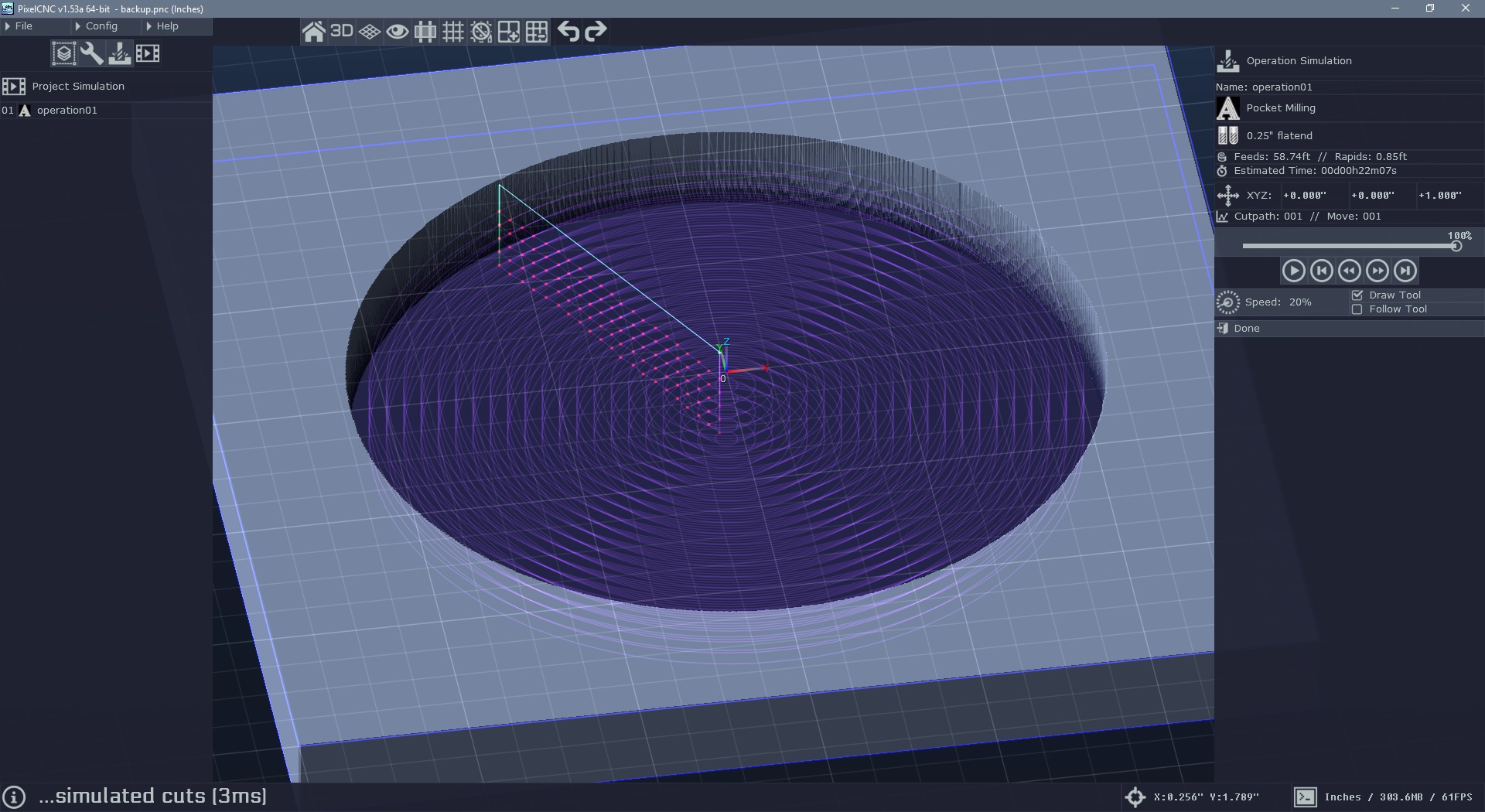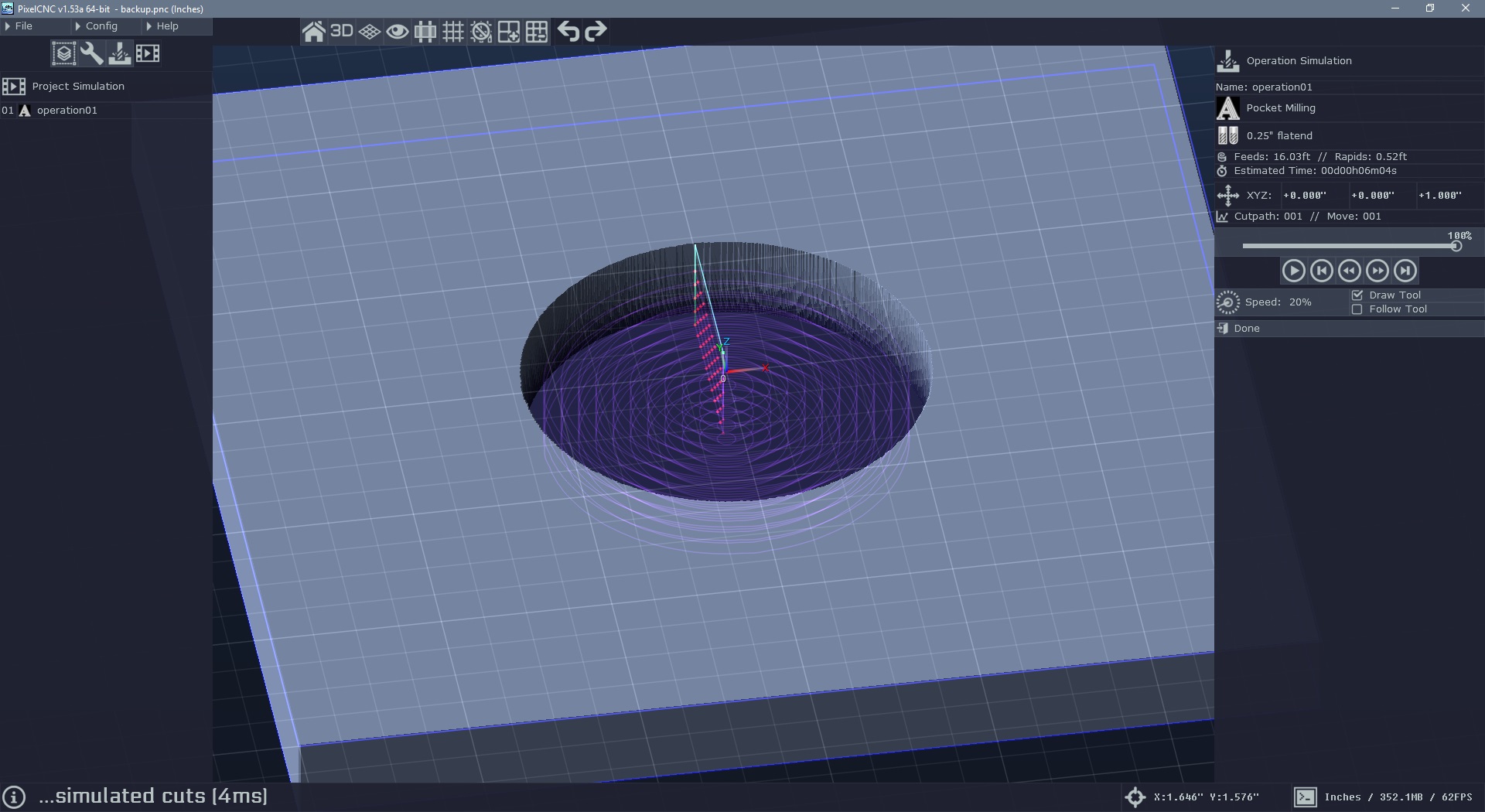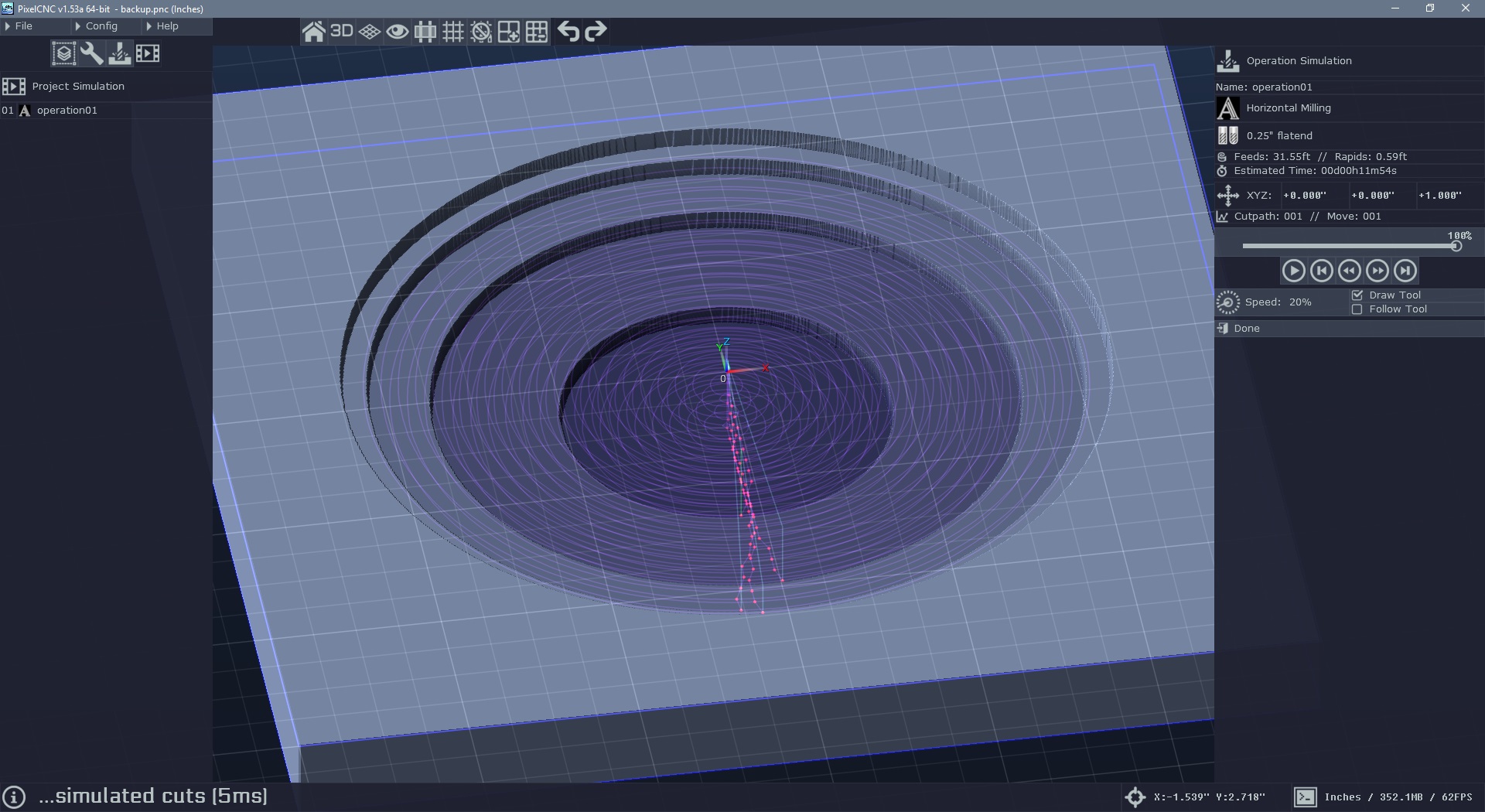What is the difference between these two ? After Medial - axis operation, I tried clearing the pocket with both. Only pocket milling has the offset to leave the angled sides but still leaves uncut areas inside the pocket. Its always in the very center of the pocket, like it needs another pass to clear. The horizontal tool path clears better but there is no offset so its unusable for pocket clearing.






